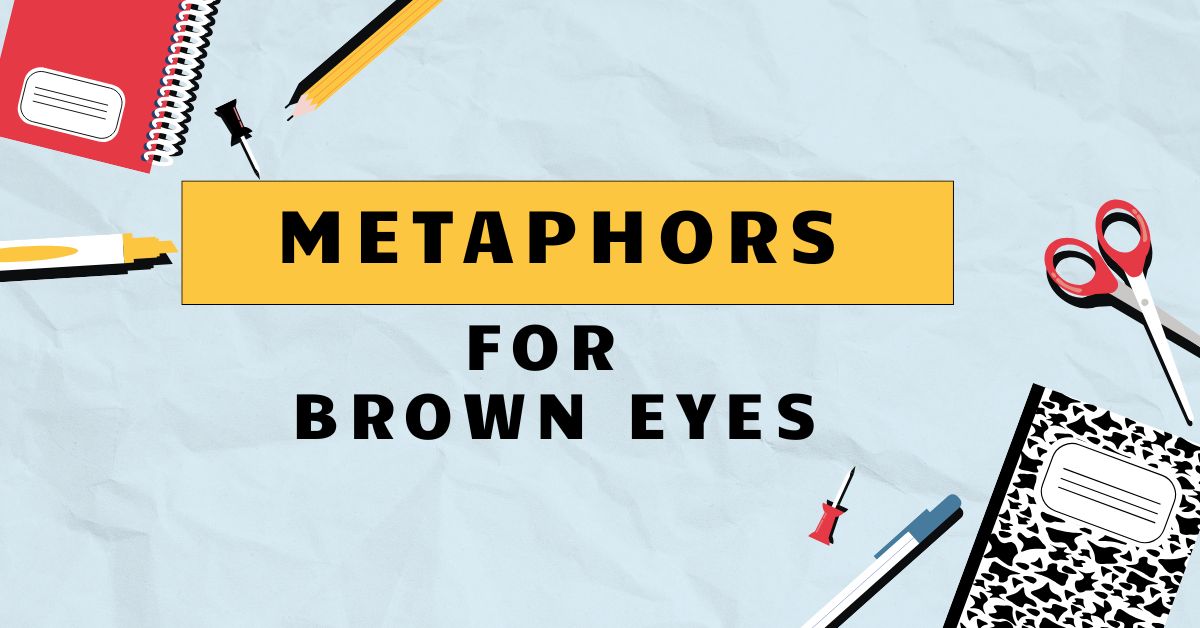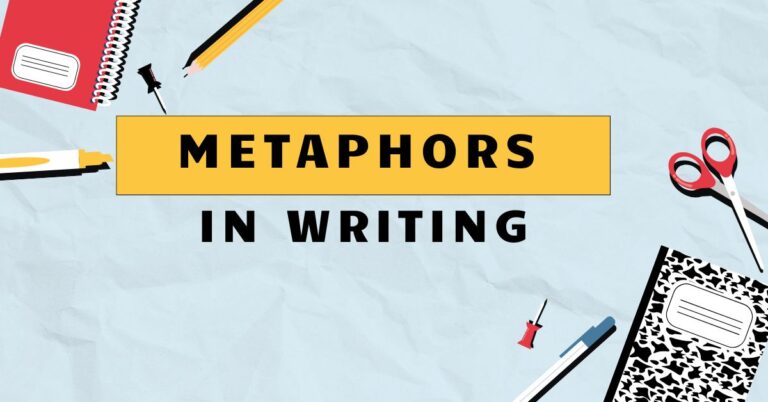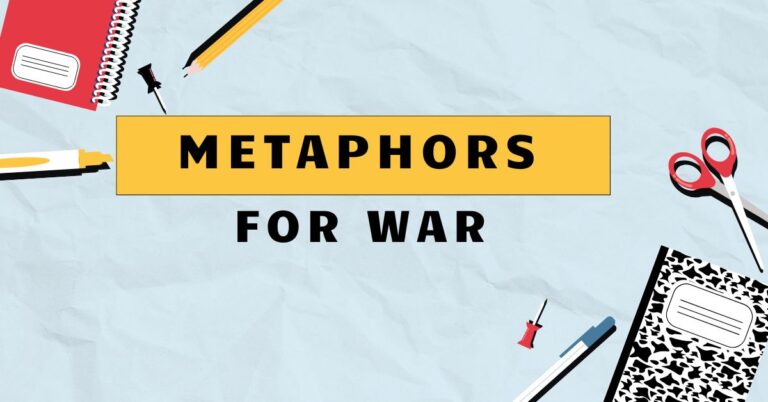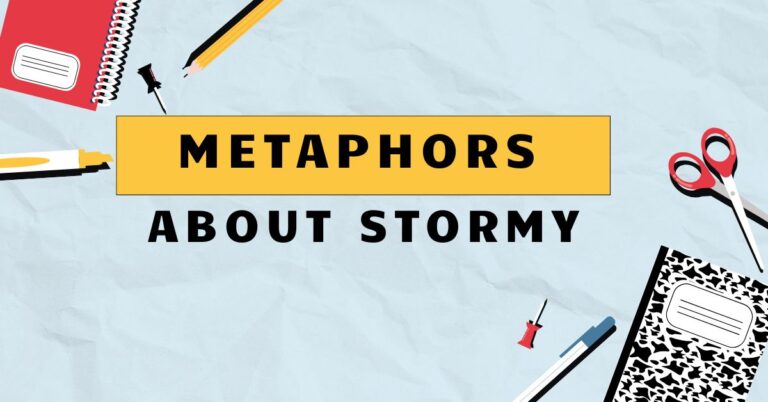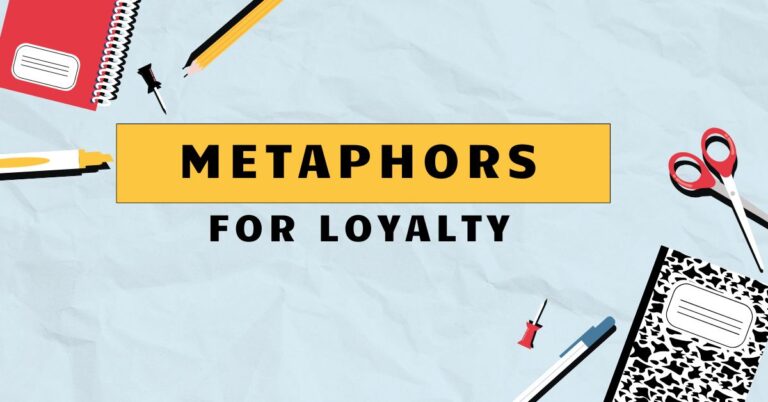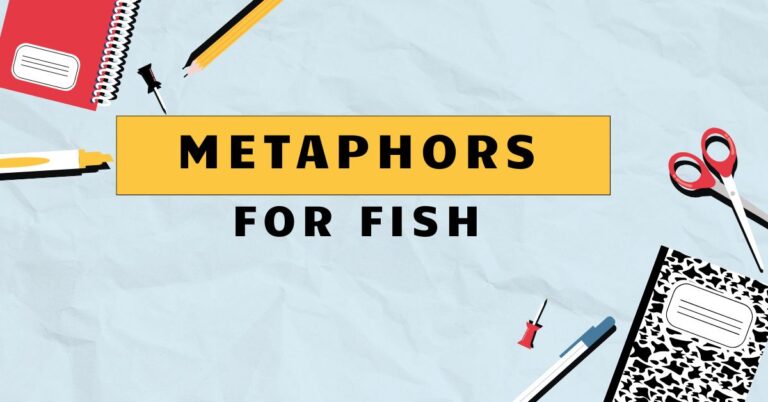47 Metaphors for Brown Eyes: A Comprehensive Guide
Metaphors are powerful tools in the English language, allowing us to paint vivid pictures and evoke emotions through indirect comparisons. When describing physical attributes, such as eye color, metaphors can transform simple observations into evocative imagery.
This article delves into the world of metaphors for brown eyes, exploring their diverse forms, functions, and proper usage. Whether you are a student of English literature, a creative writer, or simply someone who appreciates the beauty of language, this guide will equip you with the knowledge and skills to effectively use metaphors to describe brown eyes.
Understanding and utilizing metaphors effectively enhances your descriptive writing and adds depth to your communication. This article will benefit anyone looking to improve their creative writing, expand their vocabulary, and gain a deeper appreciation for the nuances of the English language.
By exploring various categories of metaphors, examples, and practical exercises, you will develop a strong foundation for using metaphors in your writing.
Table of Contents
- Definition of Metaphor
- Structural Breakdown of Metaphors
- Types and Categories of Metaphors for Brown Eyes
- Examples of Metaphors for Brown Eyes
- Usage Rules for Metaphors
- Common Mistakes When Using Metaphors
- Practice Exercises
- Advanced Topics in Metaphorical Language
- Frequently Asked Questions
- Conclusion
Definition of Metaphor
A metaphor is a figure of speech that directly compares two unrelated things without using “like” or “as.” It asserts that one thingisanother, creating a connection between them based on shared qualities or characteristics. Metaphors are essential for adding depth, color, and emotional resonance to language.
They allow writers and speakers to convey complex ideas in a concise and memorable way.
In contrast to similes, which use explicit comparison words like “like” or “as” (e.g., “Her eyes arelikepools of chocolate”), metaphors make an implicit comparison (e.g., “Her eyesarepools of chocolate”). This direct assertion gives metaphors a stronger and more impactful effect.
The effectiveness of a metaphor relies on the reader’s ability to understand the implied connection between the two seemingly disparate concepts.
Metaphors function by transferring qualities from one thing to another, creating a new understanding of the subject. For example, saying “His eyes were a bottomless well” doesn’t literally mean his eyes are a well; it means they possess a depth and mystery associated with a well.
This creates a richer and more evocative image than simply stating that his eyes were deep.
Structural Breakdown of Metaphors
The structure of a metaphor involves two key elements: thetenorand thevehicle. Thetenoris the subject being described (in this case, brown eyes), while thevehicleis the object or concept to which the tenor is being compared.
Understanding this structure helps in crafting effective and meaningful metaphors.
The relationship between the tenor and the vehicle is based on shared characteristics or associations. The vehicle should possess qualities that are relevant and illuminating to the tenor.
For instance, if we describe brown eyes as “molten chocolate,” the shared quality is the rich, warm color and perhaps a sense of indulgence or comfort.
The effectiveness of a metaphor also depends on the context in which it is used. A metaphor that works well in one situation might be confusing or inappropriate in another.
Consider the audience and the overall tone of the writing when selecting and crafting metaphors.
Types and Categories of Metaphors for Brown Eyes
Metaphors for brown eyes can be categorized based on the specific qualities they emphasize and the imagery they evoke. Here are some common categories:
Nature-Based Metaphors
Nature-based metaphors draw comparisons between brown eyes and elements of the natural world, such as soil, trees, or landscapes. These metaphors often evoke a sense of groundedness, warmth, and organic beauty.
Examples include: “Her eyes were autumn leaves,” “His eyes were the color of rich soil after a rain,” or “Her eyes were like a deep forest.” These metaphors connect the brown color to the earthy tones and textures found in nature, creating a sense of natural beauty and depth.
Earth-Toned Metaphors
Earth-toned metaphors specifically focus on the colors and textures of the earth, such as clay, sand, or stone. These metaphors emphasize stability, resilience, and a connection to the physical world.
Examples include: “Eyes the color of sun-baked clay,” “Her eyes were like polished river stones,” or “His eyes held the warmth of desert sand.” These metaphors evoke a sense of timelessness and strength, associating the brown eyes with the enduring qualities of the earth.
Gemstone Metaphors
Gemstone metaphors compare brown eyes to precious or semi-precious stones, such as topaz, amber, or tiger’s eye. These metaphors emphasize rarity, beauty, and a sense of inner light or brilliance.
Examples include: “Her eyes were pools of liquid amber,” “His eyes gleamed like polished topaz,” or “Her eyes held the depths of a smoky quartz.” These metaphors create a sense of value and sophistication, suggesting that the brown eyes possess a unique and captivating beauty.
Food-Related Metaphors
Food-related metaphors use images of food and drink to describe brown eyes, often emphasizing warmth, richness, and indulgence. These metaphors can evoke a sense of comfort and pleasure.
Examples include: “Eyes like melted chocolate,” “Her eyes were the color of strong coffee,” or “His eyes held the warmth of caramel.” These metaphors appeal to the senses, creating a vivid and inviting image of the brown eyes.
Liquid Metaphors
Liquid metaphors compare brown eyes to various liquids, such as honey, molasses, or dark rum. These metaphors emphasize fluidity, depth, and a sense of mystery or intoxication.
Examples include: “Her eyes were like pools of dark honey,” “His eyes flowed like molasses,” or “Her eyes held the secrets of dark rum.” These metaphors create a sense of movement and depth, suggesting that the brown eyes possess a captivating and alluring quality.
Wood-Inspired Metaphors
Wood-inspired metaphors draw comparisons between brown eyes and different types of wood, such as oak, mahogany, or walnut. These metaphors emphasize strength, warmth, and a sense of natural beauty.
Examples include: “Her eyes were the color of aged oak,” “His eyes held the warmth of polished mahogany,” or “Her eyes possessed the richness of walnut.” These metaphors evoke a sense of timelessness and stability, associating the brown eyes with the enduring qualities of wood.
Examples of Metaphors for Brown Eyes
The following tables provide a comprehensive list of metaphors for brown eyes, categorized by the types discussed above. Each table contains at least 20 examples to illustrate the variety and creativity possible when using metaphors.
Table 1: Nature-Based Metaphors for Brown Eyes
This table showcases metaphors that draw inspiration from the natural world, evoking a sense of warmth, earthiness, and organic beauty. These examples aim to connect the brown eyes to the familiar and comforting elements of nature.
| Metaphor |
|---|
| Her eyes were autumn leaves, swirling with secrets. |
| His eyes were the color of rich soil after a rain, fertile and deep. |
| Her eyes were like a deep forest, full of hidden paths. |
| His eyes were the shade of a gentle stream, reflecting the sky. |
| Her eyes were like the bark of an ancient tree, weathered and wise. |
| His eyes held the warmth of a summer sunset. |
| Her eyes were the color of dried earth, waiting for the rain. |
| His eyes were like a field of wheat, golden and swaying. |
| Her eyes reflected the stillness of a mountain lake. |
| His eyes were the color of a robin’s egg, speckled with light. |
| Her eyes were like the soft brown earth beneath a canopy of trees. |
| His eyes held the depth of a hidden cave. |
| Her eyes were the color of a sparrow’s wing. |
| His eyes were like the dark soil that nurtures life. |
| Her eyes reflected the warmth of a campfire under the stars. |
| His eyes were the color of fertile ground ready for planting. |
| Her eyes were like the quiet strength of a rooted tree. |
| His eyes held the mystery of a dense woodland. |
| Her eyes were the color of twilight, blending day and night. |
| His eyes mirrored the tranquility of a serene meadow. |
| Her eyes were the color of freshly turned earth. |
| His eyes held the promise of a bountiful harvest. |
| Her eyes were like the gentle curve of a rolling hill. |
Table 2: Earth-Toned Metaphors for Brown Eyes
This table focuses on metaphors that draw comparisons to various earth tones and textures, emphasizing stability, resilience, and a connection to the physical world. These examples aim to evoke a sense of groundedness and timelessness.
| Metaphor |
|---|
| Eyes the color of sun-baked clay, strong and enduring. |
| Her eyes were like polished river stones, smooth and serene. |
| His eyes held the warmth of desert sand, ancient and knowing. |
| Her eyes were the shade of rich ochre, earthy and vibrant. |
| His eyes were like grains of sand, countless and mysterious. |
| Her eyes held the depth of a canyon wall. |
| His eyes were the color of terracotta, warm and inviting. |
| Her eyes were like the shifting sands of the desert, ever-changing. |
| His eyes held the strength of granite. |
| Her eyes were the color of adobe, rustic and charming. |
| His eyes were like the cool, smooth surface of slate. |
| Her eyes held the history of ancient rock formations. |
| His eyes were the color of weathered sandstone, etched with time. |
| Her eyes were like the solid foundation of bedrock. |
| His eyes held the quiet resilience of desert flora. |
| Her eyes were the color of raw umber, deep and intense. |
| His eyes were like the rough texture of pumice stone. |
| Her eyes held the secrets of the earth’s core. |
| His eyes were the color of sedimentary rock, layered with stories. |
| Her eyes mirrored the vastness of the desert landscape. |
| His eyes were the color of the canyon walls at sunset. |
| Her eyes held the warmth of the earth’s embrace. |
| His eyes were like the solid surface of the planet. |
Table 3: Gemstone Metaphors for Brown Eyes
This table presents metaphors that compare brown eyes to various gemstones, emphasizing their rarity, beauty, and inner light. These examples aim to create a sense of preciousness and captivating allure.
| Metaphor |
|---|
| Her eyes were pools of liquid amber, warm and inviting. |
| His eyes gleamed like polished topaz, bright and captivating. |
| Her eyes held the depths of a smoky quartz, mysterious and alluring. |
| His eyes were the color of tiger’s eye, swirling with golden light. |
| Her eyes were like brown diamonds, rare and precious. |
| His eyes held the fire of a garnet. |
| Her eyes were the shade of chocolate pearls, lustrous and smooth. |
| His eyes were like polished bronzite, reflecting inner strength. |
| Her eyes held the shimmer of a sunstone. |
| His eyes were the color of coffee bean jasper, rich and grounding. |
| Her eyes were like the warm glow of a citrine. |
| His eyes held the earthy tones of jasper. |
| Her eyes were the color of raw amber, glowing with ancient light. |
| His eyes were like the deep shimmer of a chocolate diamond. |
| Her eyes held the captivating sparkle of hazel gemstones. |
| His eyes were the color of rich, dark garnet stones. |
| Her eyes were like the warm, inviting glow of amber. |
| His eyes held the mysterious depths of smoky quartz crystals. |
| Her eyes were the color of polished tiger’s eye, reflecting strength. |
| His eyes mirrored the brilliance of a brown diamond. |
| Her eyes were like the intense fire of a red garnet. |
| His eyes held the serene beauty of chocolate pearls. |
| Her eyes were the color of bronzite, radiating inner strength. |
Table 4: Food-Related Metaphors for Brown Eyes
This table provides examples of food-related metaphors, aiming to evoke a sense of warmth, richness, and indulgence. These metaphors appeal to the senses, creating a vivid and inviting image of the brown eyes.
| Metaphor |
|---|
| Eyes like melted chocolate, smooth and irresistible. |
| Her eyes were the color of strong coffee, bold and awakening. |
| His eyes held the warmth of caramel, sweet and comforting. |
| Her eyes were like rich mocha, a blend of warmth and depth. |
| His eyes were the color of dark honey, thick and golden. |
| Her eyes held the allure of dark chocolate truffles. |
| His eyes were like the creamy swirl in a cup of latte. |
| Her eyes were the color of roasted chestnuts, warm and inviting. |
| His eyes held the richness of dark molasses. |
| Her eyes were like the sweet glaze on a cinnamon roll. |
| His eyes were the color of dark maple syrup, thick and sweet. |
| Her eyes held the comforting warmth of hot cocoa. |
| His eyes were like the deep brown crust of a freshly baked pie. |
| Her eyes were the color of rich toffee, buttery and smooth. |
| His eyes held the inviting aroma of freshly brewed coffee. |
| Her eyes were like the indulgent swirl of chocolate fudge. |
| His eyes were the color of dark brown sugar, sweet and grainy. |
| Her eyes held the comfort of a warm gingerbread cookie. |
| His eyes were like the rich sauce of a chocolate lava cake. |
| Her eyes mirrored the warmth of a freshly baked brownie. |
| His eyes were the color of rich chestnut honey. |
| Her eyes held the sweet promise of a caramel apple. |
| His eyes were like the comforting flavor of spiced chai tea. |
Table 5: Liquid Metaphors for Brown Eyes
This table features metaphors that compare brown eyes to various liquids, emphasizing fluidity, depth, and a sense of mystery or intoxication. These examples aim to create a captivating and alluring image.
| Metaphor |
|---|
| Her eyes were like pools of dark honey, sweet and captivating. |
| His eyes flowed like molasses, slow and deliberate. |
| Her eyes held the secrets of dark rum, mysterious and intoxicating. |
| His eyes were the color of rich espresso, intense and awakening. |
| Her eyes were like a still, brown river, deep and reflective. |
| His eyes held the warmth of aged brandy. |
| Her eyes were the color of dark maple syrup, smooth and flowing. |
| His eyes were like a deep well of chocolate, endless and inviting. |
| Her eyes held the tranquil depths of a serene lake. |
| His eyes were the color of liquid caramel, warm and sweet. |
| Her eyes were like a stream of dark chocolate, rich and decadent. |
| His eyes held the mystery of a hidden spring. |
| Her eyes were the color of dark, aged balsamic vinegar, complex and deep. |
| His eyes were like a swirling vortex of brown ink. |
| Her eyes held the tranquil depths of a hidden lagoon. |
| His eyes were the color of dark, rich gravy. |
| Her eyes were like a cascade of melted chocolate, smooth and flowing. |
| His eyes mirrored the depths of a still, brown pond. |
| Her eyes held the serene beauty of a quiet stream. |
| His eyes were the color of dark, aged port wine. |
| Her eyes were like a soothing elixir of chocolate. |
| His eyes held the quiet depths of a serene lake. |
| Her eyes were the color of liquid bronze. |
Usage Rules for Metaphors
Using metaphors effectively requires understanding several key rules:
- Clarity: The metaphor should be understandable to your audience. Avoid obscure or overly complex comparisons.
- Relevance: The vehicle should have a clear and relevant connection to the tenor. The shared qualities should be apparent.
- Originality: Strive for fresh and original metaphors. Overused metaphors (clichés) can weaken your writing.
- Consistency: Maintain consistency in your metaphors. Avoid mixing metaphors that create confusing or contradictory images.
- Appropriateness: Ensure the metaphor is appropriate for the context and tone of your writing.
Example of a clear and relevant metaphor: “Her eyes were pools of melted chocolate” (the shared qualities are the warm, rich brown color and a sense of indulgence).
Example of an overused metaphor (cliché): “Her eyes were as brown as a penny” (lacks originality and impact).
Example of a mixed metaphor: “Her eyes were a stormy sea, but also a warm fireplace” (combines contradictory images, creating confusion).
Common Mistakes When Using Metaphors
Several common mistakes can diminish the effectiveness of metaphors. Here are some examples with corrections:
1. Overusing Metaphors: Using too many metaphors in a short space can overwhelm the reader and dilute their impact.
Incorrect: “Her eyes were melted chocolate, a warm fireplace, and a deep forest all at once.”
Correct: “Her eyes were like pools of melted chocolate, radiating warmth and comfort.”
2. Mixing Metaphors: Combining unrelated images creates confusion and weakens the overall effect.
Incorrect: “His eyes were a bottomless well, sailing through a sea of dreams.”
Correct: “His eyes were a bottomless well, filled with untold stories.”
3. Using Clichés: Relying on overused metaphors makes your writing predictable and uninspired.
Incorrect: “Her eyes were as brown as berries.”
Correct: “Her eyes were the color of ripe chestnuts, gleaming with warmth.”
4. Inappropriate Comparisons: Choosing vehicles that are unrelated or inappropriate for the tenor can create a jarring effect.
Incorrect: “Her eyes were like a rusty nail.”
Correct: “Her eyes were like polished river stones, smooth and serene.”
Practice Exercises
Test your understanding of metaphors with these practice exercises. Identify the best metaphor for describing brown eyes in each scenario.
Exercise 1: Choose the best metaphor for describing brown eyes.
| Question | Options | Answer |
|---|---|---|
| Which metaphor best describes warm, inviting brown eyes? | a) Cold steel, b) Melted chocolate, c) Sharp glass | b) Melted chocolate |
| Which metaphor best describes mysterious, deep brown eyes? | a) Shallow puddle, b) Bottomless well, c) Clear sky | b) Bottomless well |
| Which metaphor best describes bright, sparkling brown eyes? | a) Dim ember, b) Polished topaz, c) Dull stone | b) Polished topaz |
| Which metaphor best describes earthy, grounded brown eyes? | a) Floating cloud, b) Rich soil, c) Artificial light | b) Rich soil |
| Which metaphor best describes strong, resilient brown eyes? | a) Fragile flower, b) Ancient oak, c) Thin paper | b) Ancient oak |
| Which metaphor best describes rich, dark brown eyes? | a) Pale linen, b) Dark rum, c) Clear water | b) Dark rum |
| Which metaphor best describes warm, comforting brown eyes? | a) Icy wind, b) Hot cocoa, c) Cold stone | b) Hot cocoa |
| Which metaphor best describes captivating, alluring brown eyes? | a) Open book, b) Hidden spring, c) Empty page | b) Hidden spring |
| Which metaphor best describes unique, precious brown eyes? | a) Common pebble, b) Brown diamond, c) Ordinary rock | b) Brown diamond |
| Which metaphor best describes serene, peaceful brown eyes? | a) Chaotic storm, b) Serene lake, c) Raging fire | b) Serene lake |
Exercise 2: Rewrite the following sentences using a metaphor to describe the brown eyes.
| Question | Answer |
|---|---|
| Her eyes were brown and warm. | Her eyes were the color of warm caramel, inviting and comforting. |
| His eyes were brown and deep. | His eyes were like a bottomless well, filled with untold stories. |
| Her eyes were brown and sparkling. | Her eyes gleamed like polished topaz, bright and captivating. |
| His eyes were brown and earthy. | His eyes were the color of rich soil after a rain, fertile and deep. |
| Her eyes were brown and strong. | Her eyes were like the bark of an ancient tree, weathered and wise. |
| His eyes were brown and mysterious. | His eyes held the secrets of dark rum, mysterious and intoxicating. |
| Her eyes were brown and comforting. | Her eyes held the comforting warmth of hot cocoa. |
| His eyes were brown and alluring. | His eyes were like a hidden spring, captivating and alluring. |
| Her eyes were brown and precious. | Her eyes were like brown diamonds, rare and precious. |
| His eyes were brown and peaceful. | His eyes held the tranquil depths of a serene lake. |
Advanced Topics in Metaphorical Language
For advanced learners, exploring extended metaphors and mixed metaphors can add complexity and nuance to their writing. Anextended metaphoris a metaphor that is developed over several lines or even an entire piece of writing.
It allows for a deeper exploration of the comparison and can create a more profound impact on the reader.
Example of an extended metaphor:”Her eyes were a deep forest, a place of hidden paths and ancient trees. Sunlight filtered through the canopy, creating dappled patterns of light and shadow.
Within their depths lay secrets untold, waiting to be discovered by those who dared to venture in.”
Mixed metaphors, while generally avoided, can be used intentionally for humorous or satirical effect. However, they should be used with caution, as they can easily create confusion if not handled skillfully.
Example of intentional mixed metaphor: “His ideas were a house of cards built on quicksand, destined to crash and burn in a sea of flames.”
Frequently Asked Questions
Here are some frequently asked questions about using metaphors:
- What is the difference between a metaphor and a simile?
A metaphor directly compares two unlike things without using “like” or “as,” while a simile uses “like” or “as” to make the comparison explicit. For example, “Her eyes were pools of chocolate” (metaphor) versus “Her eyes were like pools of chocolate” (simile).
- How can I avoid using clichés when creating metaphors?
To avoid clichés, brainstorm fresh and original comparisons. Think about specific qualities of the subject you want to emphasize and explore unconventional connections.
- Is it okay to use multiple metaphors in one sentence?
Using multiple metaphors in one sentence can be overwhelming and confusing. It’s generally best to stick to one clear and effective metaphor per sentence.
- How do I know if a metaphor is appropriate for my audience?
Consider your audience’s background, knowledge, and cultural context. Choose metaphors that are relevant and understandable to them.
- Can metaphors be used in formal writing?
Yes, metaphors can be used in formal writing, but they should be used sparingly and with careful consideration. Ensure that the metaphors are appropriate for the tone and purpose of the writing.
- How can I improve my ability to create effective metaphors?
Read widely, pay attention to the metaphors used by other writers, and practice creating your own metaphors regularly. Experiment with different comparisons and seek feedback on your writing.
- What role does context play in understanding a metaphor?
Context is crucial for understanding a metaphor. The surrounding words, sentences, and overall tone of the writing provide clues about the intended meaning and connection between the tenor and the vehicle.
- Are there any cultural differences in the interpretation of metaphors?
Yes, cultural differences can influence the interpretation of metaphors. Some metaphors may be more familiar or meaningful in certain cultures than others. Be mindful of cultural nuances when using metaphors in cross-cultural communication.
- How do you prevent mixed metaphors?
Preventing mixed metaphors involves ensuring that all elements within your comparison remain logically consistent. Avoid combining images or ideas that clash or create nonsensical scenarios.
- What makes a metaphor ‘strong’?
A strong metaphor is clear, relevant, original, and evocative. It creates a vivid and memorable image in the reader’s mind and enhances their understanding of the subject.
- How can I make my metaphors more vivid?
To make metaphors more vivid, use sensory details, specific imagery, and strong verbs. Engage the reader’s senses and create a concrete and memorable picture.
Conclusion
Metaphors are powerful tools for enriching your writing and communication. When used effectively, they can transform simple descriptions into evocative imagery.
By understanding the structure, types, and usage rules of metaphors, you can enhance your ability to describe brown eyes in a creative and compelling way. Remember to prioritize clarity, relevance, and originality in your metaphorical language.
Continue practicing and experimenting with metaphors to develop your skills and find your unique voice. Pay attention to the metaphors used by other writers and seek feedback on your own writing.
With dedication and creativity, you can master the art of using metaphors to paint vivid and memorable portraits with words. The key takeaways are to practice, read widely, and always consider your audience when crafting your metaphors.

